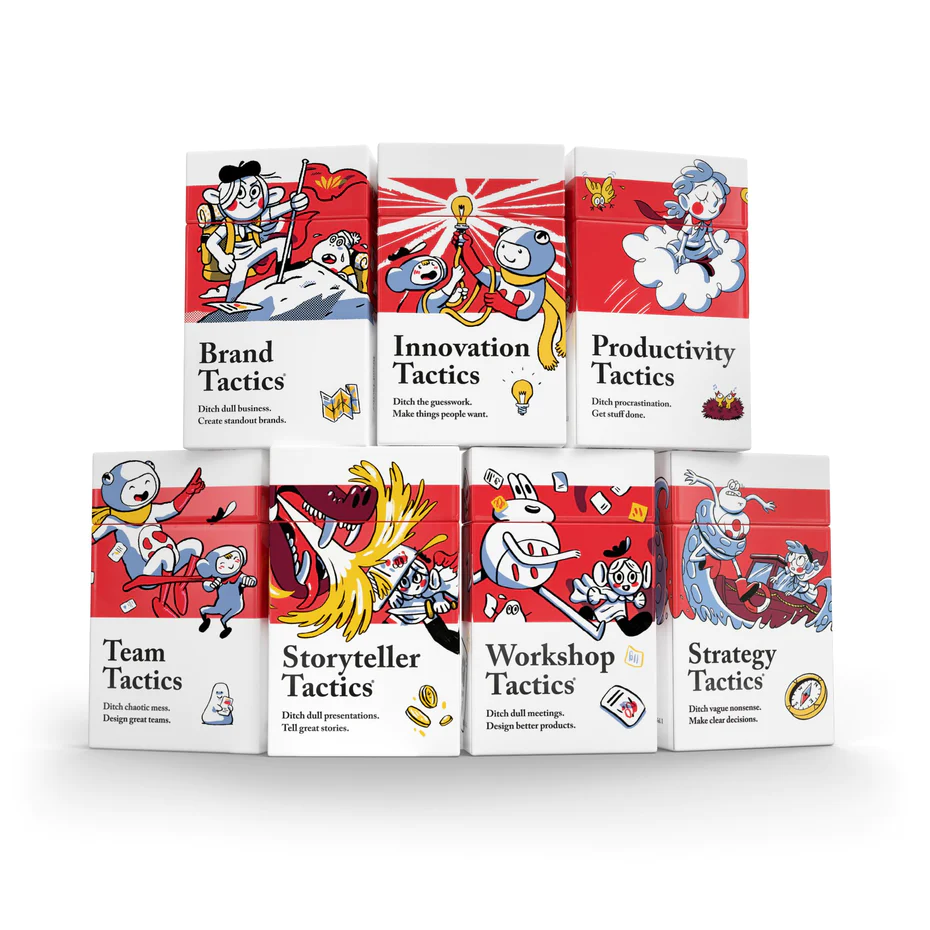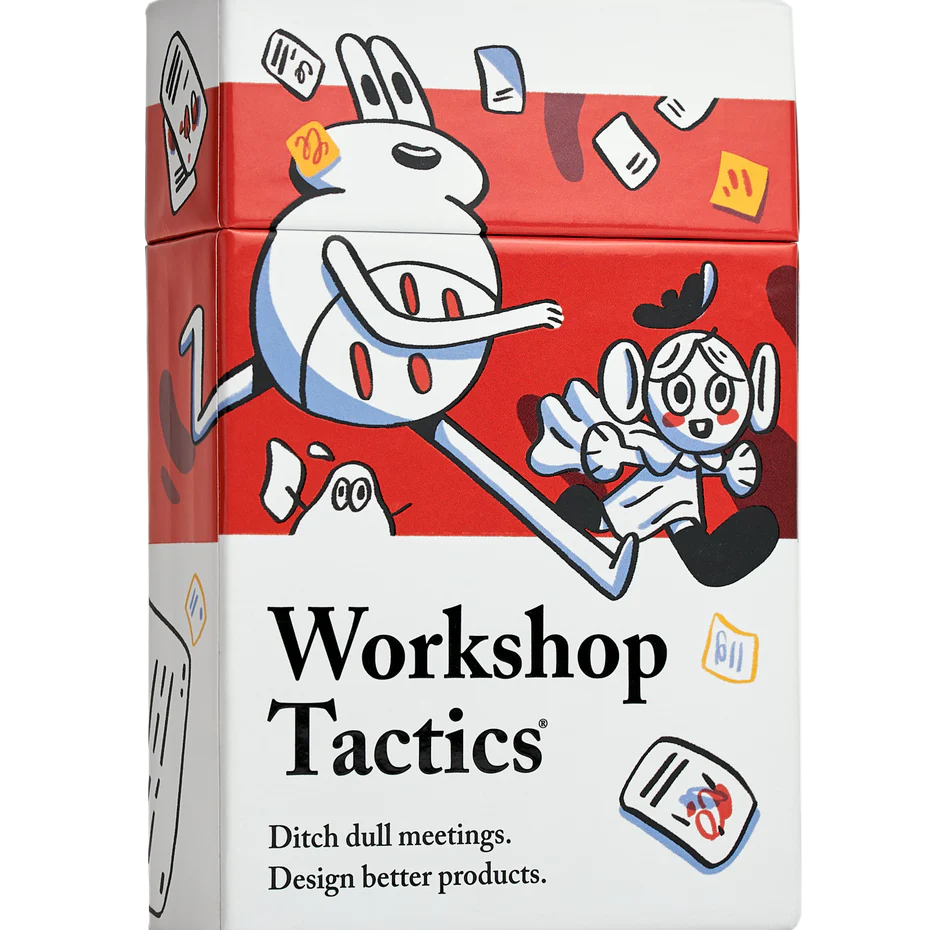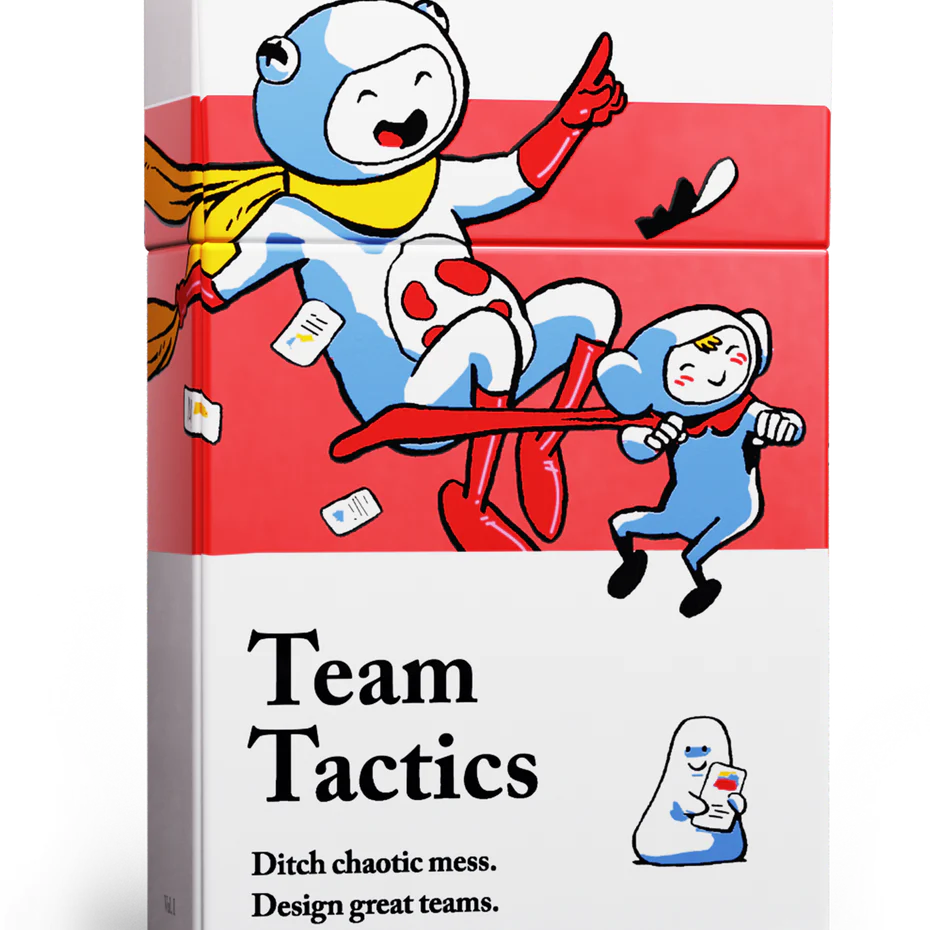Pip Decks Retros Review
Does the Pip Decks Retros expansion pack add value to teams as they evaluate their work? Let’s talk through what you can do with the processes outlined in the deck in this Pip Decks Retros review.
Have you seen the Retros deck by Pip Decks advertised online? You’ve probably seen them hyped on line by sketchy looking influencers who just want to SELL YOU THE LATEST HACK to fill in all the gaps so your business can operate seamlessly and MAKE MILLIONS! Well, I’ve been using Pip Decks over the last two years, and I’ve been writing about their strengths and weaknesses. In this Pip Decks Retros Review I’ll talk through what retros are, how they fit into project-based work, and how you can use them to inform your team for future work.
But why listen to me? I hold an MBA in business with an emphasis on Management and Strategy, and I spent 20 years working with and managing teams in a design college. We used many of the techniques contained in the Retros deck, and in my departments I saw continual improvement by holding retros on all of our major projects.
I’ve also got an affiliate link, so that if this information is helpful, you can get your deck, contribute something back here (I receive a small commission on each sale), AND get a 15% discount on Retros and anything else you add to your purchase. Just make sure you see MURDOCKMEDIAPRODUCTIONLLC in the discount code/gift card field at checkout. Maybe you’ll find these tools are right for you while reading our retros review.
So, here it is – the good the bad and the ugly… Pip Decks Retros Review
What are Retros? Let’s dig in to our Retros review
Project retrospectives or “retros” have been around for decades. Formerly called “postmortems,” the idea is, that when a project is complete, it’s worth evaluating to identify what you did well, what you can improve, and what kinds of questions doing the project brought up.
Retros have become more important for businesses that use “design sprints” and other innovation techniques in an effort to accelerate the process of highly adoptable products and services. Because of the short-burst nature of this kind of work, it becomes important to capture the lessons learned and possible avenues of future investigation right as the design sprint is ending.
But, a lot of the literature on retrospectives or postmortems is dense with case studies. To study it you’ve got to unpack what someone did in another context and translate it to your scenario. When you are working lean and working fast, it’s easy to miss things or get bogged down in the details when drawing from the literature in the field.
Pip Decks Retros can accelerate your team’s skills in conducting retrospectives because each card is organized around a particular question, and it has a timeline and simple steps for you and your team to get the most out of your work sessions.
What are Pip Decks?
Pip Decks are a card-based system that helps you identify work that needs to be done and to organize it into manageable chunks of an hour or two each. When you are facing a challenge or question, you can get out the appropriate deck, sort through the cards, and find a process you can put into action the same day.
The processes in the Retros deck are all built around four or five axes of evaluation and each card offers a different entry into the topic. This deck is unique in that almost none of the elements are task based, other than reflecting on what happened and how the team might act given similar circumstances in the future. The other decks host actionable steps. This deck is all about discovering insight that can then be made actionable.
As your scenario changes, so can your use of the decks. Topics addressed by the other decks include productivity tactics , storyteller tactics, brand tactics, innovation tactics, strategy tactics, workshop tactics, and team tactics.
This article will review the Retros deck, but to explore the full set of decks, click the image of the full set near the top of the page (yes, it includes my affiliate link and a 15% discount on your entire order).
The Pip Decks Retros deck includes 20 retrospective processes.
The deck is built to help individuals and teams evaluate past work while also planning for the future.
Pip Decks Retros review – what’s included:
- a “framing” card that helps you identify how best to run your retrospective meetings
- 14 “retro recipes,” that provide various framing conventions and steps for conducting retros.
- 5 framing cards – what is your team like, how will you plan followup, and how do you identify and sort challenges to be tackled?
Pip Decks Retros Review
Let’s kick off this Pip Decks Retros review with a little more on the big picture. A fundamental principle of any teamwork, as pointed out by Team Tactics author Dave Cunningham, is that for teams to work, they require trust. Conducting retrospectives increases the need for trust, because you are asking your team to list not only things that were positive and that the team can capitalize on in the future, but also weaknesses, confusion, and even conflict that arose during the project.
In the Air Force, after every fighter jet mission, teams, including pilots, commanders, and staff go into a debriefing room. As they go into the room they remove signs of rank so that the team can address the mission.
According to Col. Todd Dyer, “there is no rank in the debrief. An airman first class should be able to tell a technical sergeant, first lieutenant, and colonel they made a mistake. Nothing is personal in a good debrief, it is purely focused on facts and how we increase our individual performance and that of our team. That is how we get better.”
The same should be true for design teams, sales teams, or a group of venture-backed founders. You need honesty, and to get honesty, you need trust.
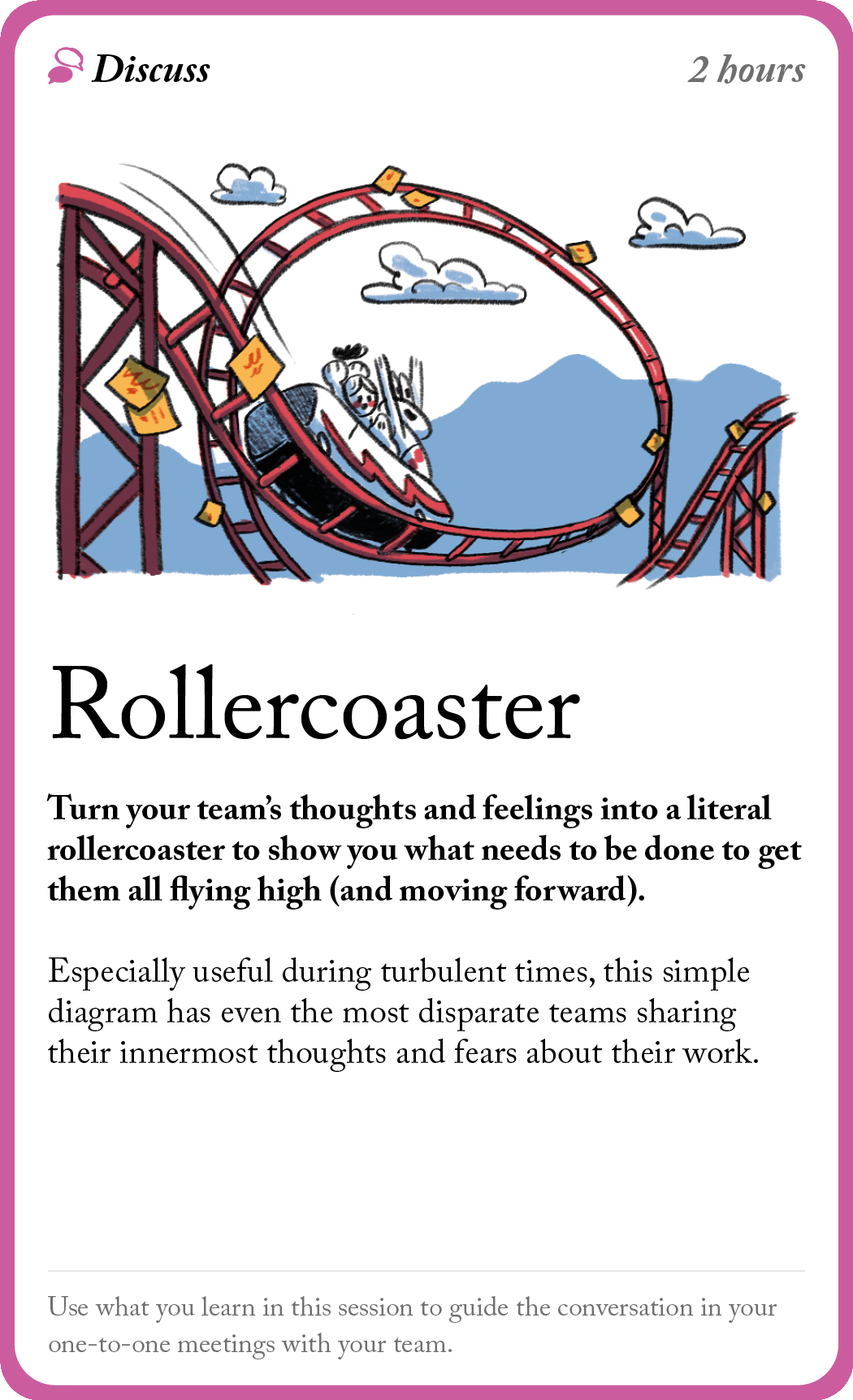
How do you use the Pip Decks Retros cards? Let’s look at our Retros review
The way I use the deck is to think about what kind of retro I need to conduct, then I scan the cards and pick a retro model that will work for the scenario. For example, If I need to review a development process from beginning to end, I like to use the Roller coaster model. With this approach a team can consider what it was like boarding the roller coaster. What kinds of feelings did the team have as they approached the first hill? When did people get thrown for a loop de loop (i.e. get confused or discombobulated)? By mapping out the process from beginning to end you can create an evaluative journey map through the process.
Not all retros need to rehash the entire journey. A traditional four-step retrospective can go through things like what you loved about the project, what you liked, longed for and learned. This approach is more top level, and it can work well when projects are structured in short bursts.
When you need to dig into the nitty gritty, the fish bone model looks at the problem through the things that make it go – people, processes, resources and technology, among others. By mapping out dependencies and identifying when and why things became bottle-necked, stretched too thin, or were well-balanced, you can identify what put you in a situation in the first place so you can head it off at the pass the next time that scenario crops up.
I’ve done this with design teams, particularly looking at signals junior team members need more input to figure out what to do. I’ve seen projects sit idle for a few days simply because an intern was thrown off when asked to address a design problem in a non-linear way. The designer felt the next step should be to continue refining design elements when the challenge was to find the right design direction to follow by exploring a range of design pathways. By conducting a retro, I and the team were able to identify the internal and external signals that confusion or misdirection were present and to create processes to flag and resolve them before they led to delays.
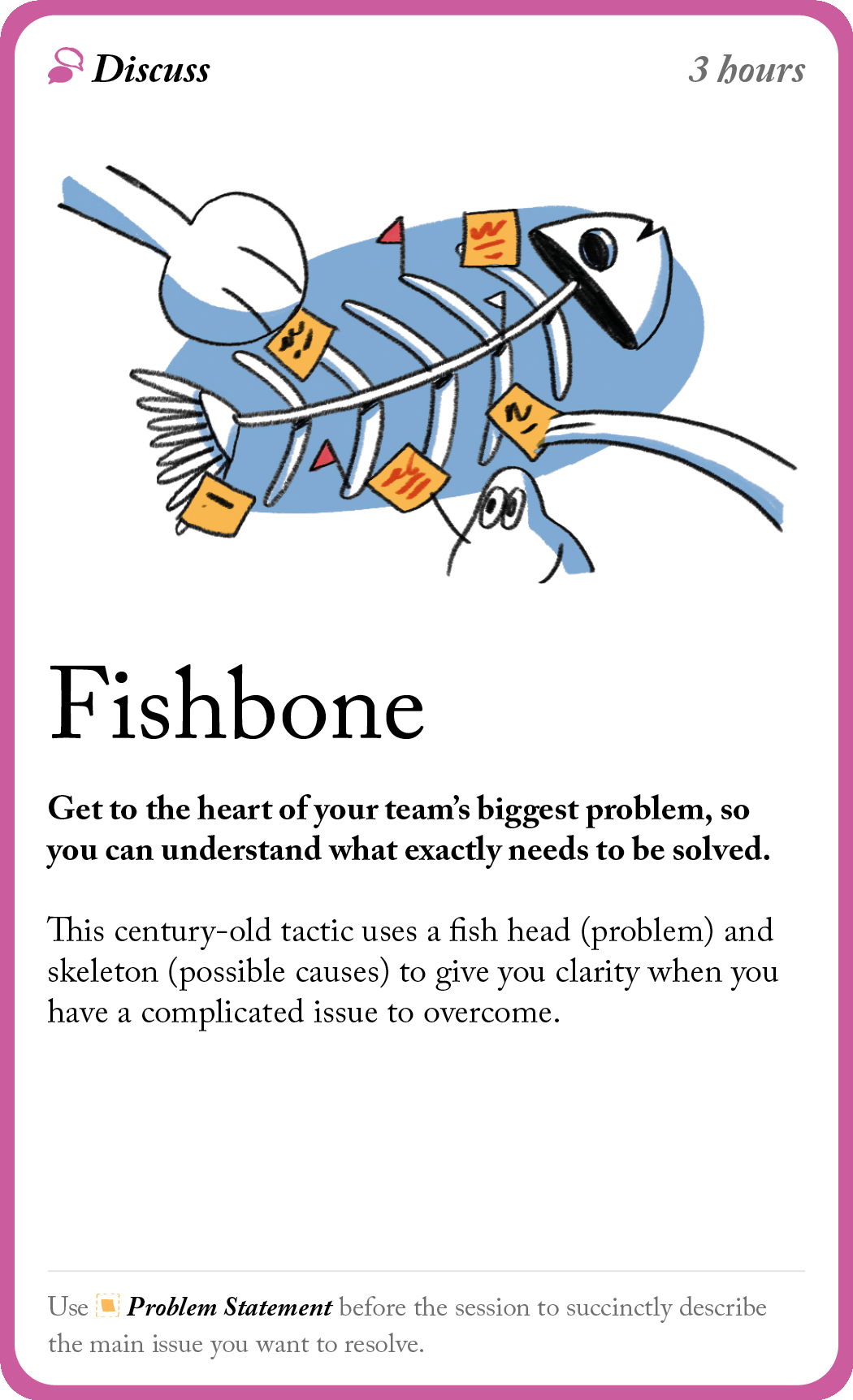
When should a team use retros?
Because there are so may approaches to retros in the deck it’s possible to make conducting retros into a regular activity. The best time is right at the end of the activity.
Does your organization conduct a monthly open house? Hold a 15 minute standup/all-hands retro at the end of the event. It’s a nice way to end cap the event, AND when done every time captures the best-of, worst-of, gratitude-for, and opportunity-to-capitalize-upon-moments from your event. These quick retros reviews can have surprising long-term benefits when applied in the right way.
In a long project, do a more intensive retro after each phase. What were the ups and downs of the research phase? Where did people pick up steam? What resources could help to maintain that momentum? After development, what were the sticking points? Where were dependencies that weren’t as detailed as they needed to be in the project plan? What sudden discoveries gave the team the ability to delight and surprise the client? Is there a way to plan for or draw out those moments on future projects?
Why now? What’s with this approach to conducting retrospective meetings?
Today’s work is driven by knowledgeable, creative people, but we each see the world in our own ways. A retro gives teams the opportunity to identify, recognize, reward and capitalize on that uniqueness and to share ways of working toward creating better, more human-centered results.
Are you ready to add a regular retros review to your team process? Click the links below to use our affiliate link to get 15% off your order. The three decks listed work nicely together if you are working to build teamwork, refine collaborative work processes, and to use retros to keep the fires burning and to fuel a culture of continual improvement.

